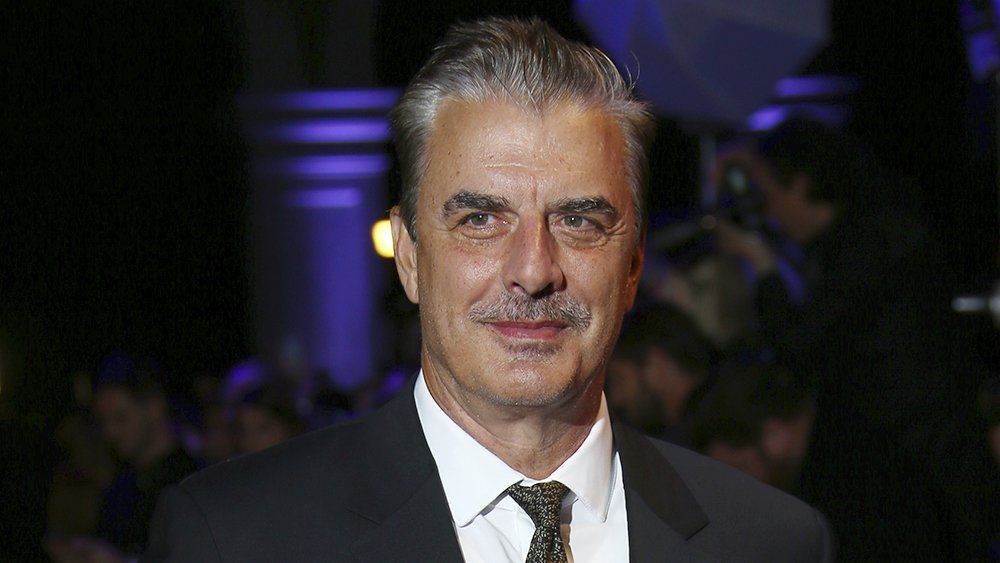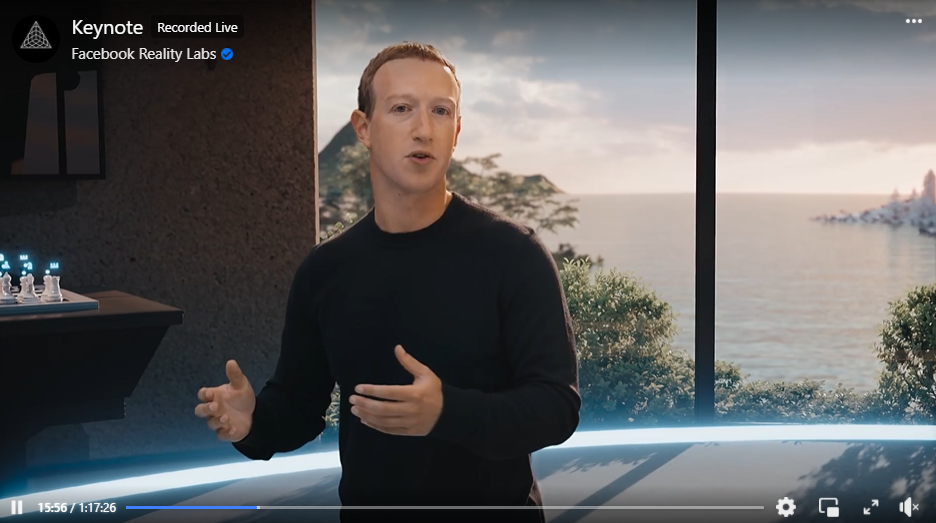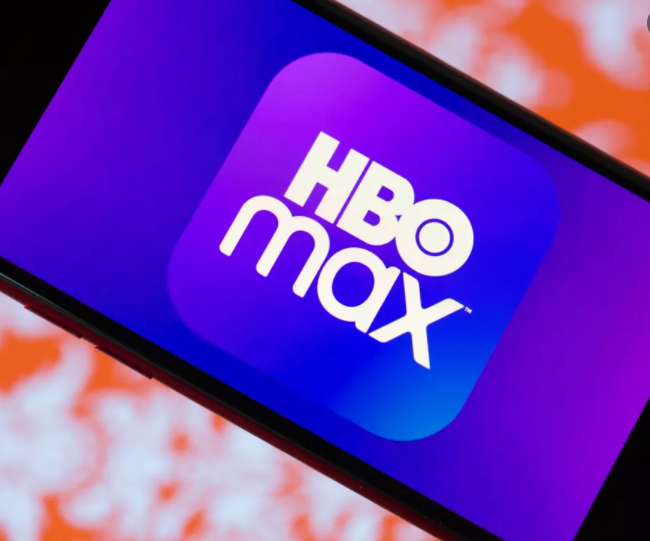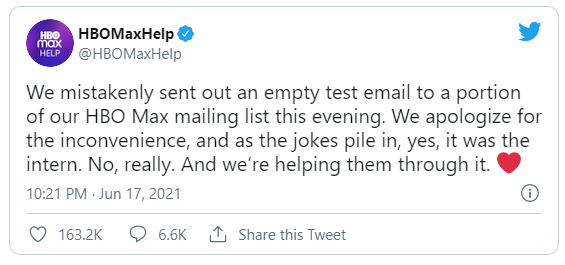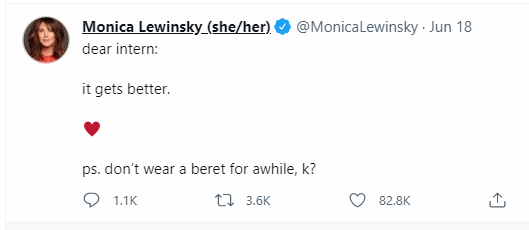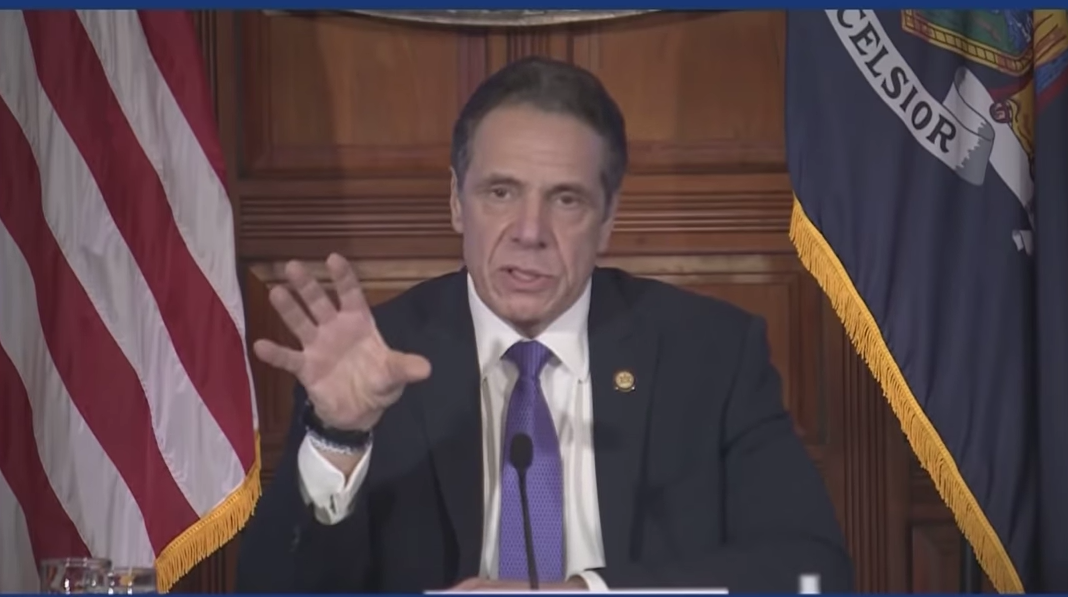Chris Noth and Peloton Respond to Sexual Assault Accusations
Peloton can’t seem to catch a break. Chris Noth, who played Mr. Big on the Sex in the City revival, first died on the show after using the bike, and then, after appearing in what seemed like a victorious response commercial, was accused by three women of sexual assault.
In a statement, Noth vehemently denied the claims:
"The accusations against me made by individuals I met years, even decades, ago are categorically false. These stories could've been from 30 years ago or 30 days ago—no always means no—that is a line I did not cross,” and
"The encounters were consensual. It's difficult not to question the timing of these stories coming out. I don't know for certain why they are surfacing now, but I do know this: I did not assault these women.”
Peloton removed the ad, and a spokesperson said, "Every single sexual assault accusation must be taken seriously. We were unaware of these allegations when we featured Chris Noth in our response to HBO's reboot. As we seek to learn more, we have stopped promoting this video and archived related social posts.”
I’m guessing that HBO is glad the writers killed off Noth’s character. For Peloton, the news is probably more attention than the company wants. It’s certainly more than Chris Noth wants.
CVS Statement on Jury Decision
A jury found that Walmart, Walgreens, and CVS contributed to the opioid crisis and will have to pay damages to Ohio counties. Plaintiffs argued that, as a New York Times article explains, pharmacists are “gatekeepers who have a duty to question suspicious prescriptions.”
The drug stores will likely appeal, and CVS published a statement disputing the decision:
We strongly disagree with the decision. Pharmacists fill legal prescriptions written by DEA-licensed doctors who prescribe legal, FDA-approved substances to treat actual patients in need.
We’re proud of the substantial work we’ve done to support our pharmacists in detecting illegitimate prescribing. But the simple facts are that opioid prescriptions are written by doctors, not pharmacists; opioid medications are made and marketed by manufacturers, not pharmacists; and our health care system depends on pharmacists to fill legitimate prescriptions that doctors deem necessary for their patients. We look forward to the appeals court review of this case, including the misapplication of public nuisance law.
As plaintiffs’ own experts testified, many factors have contributed to the opioid abuse issue, and solving this problem will require involvement from all stakeholders in our health care system and all members of our community.
CVS uses a classic crisis-communication strategy to deflect blame: zoom out and look at the entire system. True, the opioid crisis is complex, but this jury found that pharmacists are part of the problem and should be held accountable.
Jack in the Box Statement: More Well Wishes
Restaurant workers across the country are demanding higher wages and better working conditions, and Jack in the Box is one targeted group. In California, unions are lobbying for The Fast Recovery Act, which would hold corporate offices accountable if franchisees don’t comply with regulations. Today, that responsibility lies with individual stores, making it more difficult for employees to get mandatory Covid 19 protections and sick pay.
A local Jack in the Box didn’t response to a PBS NewsHour request for comment, but the corporate office sent a statement. I see the message only on the video (at 4:33), so here’s a blurry image. Note the much-maligned “hope you are well”—two variations. The first, in slightly larger font, looks like part of a template that wasn’t deleted. In this case, both are superfluous and insincere—like announcing the author’s name, which is at the bottom of the note, and the rest of the statement, in my opinion.
Nothing in the message acknowledges problems or provides plans to improve the situation. It’s defensive and does not inspire confidence in the brand. I see a lack of accountability and willingness to be vulnerable and learn from failure.
Facebook Becomes “Meta”
In the midst of controversy after internal documents were made public, Facebook is trying to reinvent itself with a new name: Meta. The company promises that “the metaverse will be social. 3D spaces in the metaverse will let you socialize, learn, collaborate and play in ways that go beyond what we can imagine.” After staying behind the scenes for the past few weeks, as the press cited internal strife as evidence of the company’s wrongdoing, Facebook’s CEO and Founder Mark Zuckerberg is out in front.
In a 1 hour and 17 minute video, Zuckerberg focuses on the “immersive experience” we’ll enjoy in the future. He emphasizes connection, which has been the company vision since around 2017.
Perhaps in a nod to the ongoing criticism of apps’ negative influence and relentless draw through algorithms, Zuckerberg says, “This isn’t about spending more time on screens. It’s about making that time we already spend better.” Of course, some of us still want to spend less time and want the same for our children. Zuckerberg also acknowledged, “The last few years have been humbling for me and my company in a lot of ways.”
Reactions to the name change are mixed but seem mostly skeptical. A Washington Post article points to a tweet: “Don’t forget that when Phillip Morris changed it’s name to Altria it was still selling cigarettes that caused cancer.”
Zuckerberg’s video is a good example of a scripted presentation with a (somewhat) conversational style. As he moves about, we see, as the Post describes, “a dizzying array of scenes that showcased the company’s vision for the metaverse. It included Zuckerberg doing his favorite water sport, hydrofoiling, with friends in a virtual environment, and then jumping into work meetings from a virtual home office, boxing with virtual avatars and working out on a virtual lily pad.” All this certainly would make me spend more time online and give me more reasons to never leave my house.
Business communication students can also analyze Zuckerberg’s “letter,” referring to a formal public message—not, of course, something mailed. I would say the same for the “keynote,” which is unlike any I’ve ever seen.
Congressman's "Bizarre" Video
Jeff Fortenberry, U.S. representative for Nebraska, was facing indictment for falsifying and concealing information and for lying to investigators about 2016 campaign contributions. In a video called “unusual” and “bizarre,” Fortenberry speaks to the camera from his truck with his wife and dog in the background. He says they are “out for a drive” in his 1963 Ford pick-up.
The video is an interesting attempt at authenticity to sway public opinion. Fortenberry wants us to believe that he is a trustworthy, everyday man—a victim rather than a criminal. He tells the story of FBI agents coming to his house “on a weekend” after a cyclone hit. With an incredulous tone, Fortenberry says, “We’re shocked. We’re stunned. I feel so personally betrayed.”
I wonder what counsel Fortenberry received or whether it was his own idea to create the video. Either way, based on the news reports and the indictment, which came later that day, Fortenberry’s message did not favorably affect the outcome for him. His arraignment is planned for later this week.
CDC Director Has a More Nuanced Approach
A New York Times writer compares CDC Director Dr. Rochelle Walensky’s vaccine messaging in different settings. Analyzing a podcast with someone Walensky likely considers a colleague, David Leonhardt describes her tone and approach as more conversational. He also identifies examples of Walensky’s acknowledgment of a “risk-benefit” assessment—more nuanced communication than we hear from the CDC in its official guidance on news media programs.
Leonhardt gave another example of Walensky’s more flexible stance on vaccines:
Walensky began her answer by restating official C.D.C. policy: “We’re not currently recommending it.” But then she added the fuller truth: “I’ll tell you what we do know, and some places where I think people might veer from standard guidance.”
He summarizes what could be more helpful in health communications:
“Health officials are frequently unwilling to take that second step in public. When confronted with uncertainty, they do not acknowledge it. They ignore gray areas and talk in black and white.”
This situation exemplifies humility as a character dimension. Leaders who admit uncertainty—that they don’t know everything and are still learning—may be more persuasive, not less.
Leonhardt is also describing integrity and, more specifically, transparency. Consistency in messaging, including giving a fuller picture, could help people make rational choices for themselves. That might not result in outcomes the CDC wants—or it might, but not in the exact timeframe or terms that the CDC dictates. As Leonhardt says, “the full truth” would give people more agency and could cause less backlash against prescriptive guidelines.
Painfully Long Peloton Email
This is the second email someone sent me from Peloton CEO and Founder John Foley. Both seem much longer than they need to be. The first paragraph muses on the company success, and the second paragraph introduces the main point—the Peloton Tread. Essentially, this is a sales pitch.
CEO and Founder John Foley organizes the email around three advantages of the Peloton Tread, which are clear and easy to follow. He could use more “you” language to focus on benefits to the reader rather than features of the product. Persuasive business writing tells readers “why” they should want to do what the writer asks.
If you were advising John Foley, what other advice would you offer? Would visuals help the message? How could he reduce the length of the email to increase the chance that people will read it? Read the entire message.
Hi there,
When we founded Peloton nearly a decade ago, we dreamt of bringing high-energy boutique fitness experiences into the home through vertically integrated platforms. That’s a fancy way of saying that we wanted the hardware to be the best in the world, the software to bring the energy and connection of other people into your home, and the content to deliver the inspiration of the most motivating instructors coaching over the best music. I hope you agree that we deliver on that goal already, but I hope you also see that we continue to innovate on the software and content because we always want your experience to get better, a commitment that I made to you back then and I am making to you again today…
But today, I write to you about another platform: The Peloton Tread. Have you ever taken a bootcamp class or a HIIT total body group class or any class involving a treadmill, where the instructor asked you to step off of the treadmill for a more full-body workout? As one of the founders of Peloton, I of course LOVE a great indoor cycling class! As you might guess, so does my wife Jill. But we have found over the years that complementing the fantastic cardio provided by the Peloton App with cardio AND strength training via bootcamp classes is a perfect new part of our fitness journey.
So I wanted to take a minute to share my excitement for the Peloton Tread with you.
Apple Clarifies Policy
Apple software chief Craig Federighi spoke with a Wall Street Journal reporter about a misunderstood policy related to child pornography. The company had announced new reporting guidelines for illegal content. As part of the same message, they described new guidelines about photos sent to and from children. User backlash concerned how the company was monitoring their phones.
Federighi said, “I do believe the soundbite that got out early was, ‘Oh my God, Apple is scanning my phone for images.’ This is not what is happening.” He clarified that, using algorithms, they’re looking at photos stored on iCloud—not on people’s phones. The company is flagging only those photos that meet criteria of child pornography.
During the published interview with the WSJ reporter (what made the final cut on the website), Federighi didn’t emphasize the end goal: protecting children. The reporter provided this context, but the message was not at the forefront’s of Federighi’s main points. His focus was on clarifying the initial message: “I think our customers own their phones,” again, distinguishing what we choose to post on Apple’s server.
Federighi also demonstrated humility by admitting that the message was garbled and that AI technology does make mistakes. In hindsight, it sounds as though Federighi would have announced these guidelines in separate messages with more detail about the photo search process.
Blame the Intern
HBOMax customers received an email with the subject, "Integration Test Email #1,” that obviously wasn’t intended for them. In a follow-up email, the company blamed an intern for the mistake.
Twitter responses poured it to support and empathize with the intern. Embarrassing stories ranged from sending emails to big groups to typos. As an intern, someone replaced all “parties” to “panties” in a 50-page legal document (dare I say “brief”?).
The best was when Monica Lewinsky weighed in.
Interns make mistakes; we all do. Facing the situation with humility—the ability to learn—is the best approach. The HBOMax situation could have been a lot worse, and fortunately, the public turned it around to focus on the shared experience we have all had.
Waitlisted Student Markets Himself
George Joseph White V was waitlisted from Cornell’s Dyson School, and he decided to promote himself. He advertised on the outside of a local bus with a photo of himself and his website. On his website, georgecantwait.com, White lists his hobbies, interests, and other information. He also includes quotes from a few of his teachers.
The approach certainly is creative and gutsy, but is it appropriate? From a business communication perspective, we consider the audience and the message. White describes his qualifications, but he doesn’t say much about how could contribute. What would he bring to the school that might differentiate him from other students on the waitlist?
White also is interviewed by a local radio station, which is posted on his website. He says he believes he’s qualified, and the only reason he wasn’t accepted is that the number of applicants increased. The number did increase, partly because of the pandemic and students taking a gap year and partly because Cornell dropped the SAT/ACT requirement.
Still, perhaps other students were simply more qualified than White, and that’s why he didn’t get in. White also chose an approach that isn’t available to all students: spending money on ads and a website.
When I asked students about the situation in class, they were mixed. Some respected his perseverance, while others thought his approach was too self-promotional and unfair. As one student wrote in chat, “It’s a WAIT list.”
Peloton Announces Recalls
After resisting action despite consumer product warnings, Peloton has conceded and is recalling two models of its treadmills. One child died and more than 70 people were injured, so the Consumer Product Safety Commission (CPSC) recommended the recalls a month ago.
In the company statement, CEO John Foley admitted the mistake:
The decision to recall both products was the right thing to do for Peloton’s Members and their families. I want to be clear, Peloton made a mistake in our initial response to the Consumer Product Safety Commission’s request that we recall the Tread+. We should have engaged more productively with them from the outset. For that, I apologize. Today’s announcement reflects our recognition that, by working closely with the CPSC, we can increase safety awareness for our Members. We believe strongly in the future of at-home connected fitness and are committed to work with the CPSC to set new industry safety standards for treadmills. We have a desire and a responsibility to be an industry leader in product safety.
The CPSC said the decision came after “weeks of intense negotiation and effort.” Peloton will suffer financially: the company has stopped selling the treads and is offering a full refund of more than $4,000 for the products. But executives may have spared themselves and the brand some reputation damage if they had acted earlier.
Beware of Overtalking During Zoom Interviews
People seem to be talking too much during video interviews. A Chronicle of Higher Education article describes two possible reasons.
One is that job candidates want to build relationships and may overtalk in a somewhat desperate attempt to connect. After a year without intimacy, we might be overcompensating. I can imagine this applying to other types of meetings and presentations as well.
Second, visual cues are tough to see on video. The void isn’t quite as cavernous as during phone interviews, but still, it’s difficult to see subtle gestures. Imagine that an interviewer is leaning forward, changing a facial expression, or raising a hand slightly. These could be missed, particularly if a candidate is meeting with a group of people.
Next time you have an interview, try to pay attention to cues and allow people to interrupt you. You might also keep your answers a bit shorter—just in case. Allow time for follow-up questions.
Governor Cuomo Address Sexual Harassment Allegations
In a video statement, Governor Andrew Cuomo addressed sexual harassment allegations made by three women. He begins well, explaining his decision to speak directly to the public on the topic, although lawyers advised him to wait. To preserve his image, this is a good call: research shows that his apology is unlikely to negatively affect lawsuit outcomes—and may even have a positive effect.
But his apology goes awry. He uses language that is classic in non-apologies, for example, “It was not my intention” and “I certainly never meant to….” In sexual harassment law, intent does not matter—only the impact. Further, this type of language typically doesn’t land well. People don’t care. Instead, he should focus on the impact on these women and perhaps on the office.
He also says, “I now understand that I acted in a way that made people feel uncomfortable.” This is problematic because first, as he says at the beginning, he is a lawyer. As a lawyer and as a political leader, he should know better. Such language is reminiscent of “I’m sorry if you were offended,” implying that it’s the receiver’s problem. A couple of days earlier, after the second allegation, the governor said, “To the extent anyone felt that way, I am truly sorry about that.”
To his credit, he says, “I apologize” and “I’m sorry,” which people do want to hear in these types of statements.
We will see what results from these allegations, in the midst of calls for his resignation. Governor Cuomo also is embroiled in charges that he lied about the number of Covid deaths in nursing homes. So far, he says that he will not resign.
School Board Apologizes for Mocking Parents and Resigns
The Board of an elementary school in California resigned over embarrassing comments on a video call. Board members didn’t realize that they were public when they made disparaging comments about parents wanting schools to reopen. They mentioned that parents miss teachers as “babysitters” and want to be able to use marijuana again.
In response, several board members resigned, and the school district wrote a statement. Within the larger statement is a message from the board members who resigned:
We deeply regret the comments that were made in the meeting of the Board of Education earlier this week. As trustees, we realize it is our responsibility to model the conduct that we expect of our students and staff and it is our obligation to build confidence in District leadership; our comments failed you in both regards, and for this we offer our sincerest apology.
We love our students, our teachers and our community, and we want to be part of the remedy to help the District move forward, returning its full focus to students' needs. To help facilitate the healing process, we will be resigning our positions as Trustees of the Oakley Union Elementary School District, effective immediately. The Superintendent will be working with the Contra Costa County Office of Education to address the vacancies on the Board of Education.
This was a difficult decision, but we hear the community's concerns, and we believe yielding to your request that we step down will allow the District to move forward. Please do not let our failure in judgment cast a shadow on the exceptional work that our teachers, administrators and hard-working employees are doing for the students of this District. They deserve and will need your support as you move forward.
Business communication students will find ways to improve this message. The authors use passive voice in the first statement and weak subjects twice in the first paragraph (“it is”). As an apology, the statement also could do better. Sincere apologies include more about the impact of the act—the damage done. I don’t see that recognition clearly.
Questions Are Different for Women in Economics
A working paper shows that women in economics receive more and tougher questions than do their male counterparts. Researchers analyzed data from 462 presentations at seminars and job talks, when candidates present their research to prospective faculty colleagues.
Controlling for fields, types of seminars, and other factors, the researchers found that women receive 12% more questions and more “hostile” or “patronizing” questions. One concern is that woman might be discouraged from presenting their work or applying for positions, which hurts the field of economics.
The authors note that less than one percent of presenters were Black or Hispanic, so no conclusions could be drawn about how these groups are treated.
The authors acknowledge that these questions may not result from ill intent but may be a result of implicit bias or part of a more systemic male-dominated culture. Sadly, the authors say that some comments are “demoralizing,” and again, they warn of the negative impact on the field:
“Many of us have heard stories of friends and colleagues whose bad experiences in seminars have led them to re-evaluate whether a career in economics is really the best choice for them.”
COVID-19 Crisis Communication for Reopening the U.S.
What comes after we “flatten the curve” of COVID cases? New York Times opinion writer Charlie Warzel warns that, without a clear communication strategy for what’s next, people will distrust leaders.
Warzel cites six communication guidelines from the report of a working group at The University of Minnesota, The Center for Infectious Disease Research and Policy (CIDRP).:
Don’t Over Reassure.
Proclaim Uncertainty
Validate Emotions—Your Audience’s and Your Own
Give People Things to Do
Admit and Apologize for Errors
Share Dilemma
Discussion:
How should U.S. officials communicate now? What do they need to accomplish, and how well are our current leaders meeting the challenge? In other words, do you agree with Warzel that our leaders are falling short?
Read the entire report. What other principles does the group recommend?
Analyze the report: the audiences, objectives, writing style, organization, and so on. What are the strengths, and how could it be improved?
A Leader Example in My Book Is Charged With Conspiracy
I was sad to see that Paul Kruse, former CEO of Blue Bell Creamery, has been charged with covering up the listeria breakout in 2015. In my book, Building Leadership Character, Kruse is a positive example of a leader who demonstrates vulnerability. His 2016 video announcing employee layoffs after the breakout was emotional and authentic.
Prosecutors say that Kruse delayed recalling tainted products, instructed employees to tell customers that product delays were caused by mechanical problems, and failed to take other appropriate action.
Blue Bell agreed to pay $19.5 million to the Department of Justice and posted a statement on its website, which focuses more on the future than on the past.
Discussion:
Can you reconcile both perspectives of Kruse as a leader? Could he be someone who covers up listeria and someone who gets emotional when talking about employee layoffs?
Assess the company’s statement. Who are the audiences, and what are the communication objectives?
Companies That Returned Federal Funding
Controversy swirls as companies grapple with whether to keep or return federal funding for the COVID-19 crisis. Distributions from the Paycheck Protection Program (PPP) seem unfair as some small businesses—the intended recipients—can’t get forgivable loans, while some larger businesses received millions of dollars that, at least in some cases, isn’t needed as emergency funding.
As the first and most highly publicized company, Shake Shack returned $10 million. Forbes tallies several others, including Ruth’s Hospitality Group, Sweetgreen, and the Los Angeles Lakers.
Store image source. Food image source.
Discussion:
What’s your view of companies that returned money compared to those that didn’t?
How should a company decide whether to return the funding?
Shake Shack doesn’t include a press release on its website or a tweet about the decision. What’s your view of this approach? Should the company promote the decision more boldly? Why or why not?
Message from Zoom CEO
People who never heard of Zoom are now relying on the company to provide flawless service, but of course we experience problems. In a blog post, CEO Eric Yuan describes how Zoom use has “ballooned overnight” and what the company has done to meet demand and improve the service.
Yuan also expresses gratitude to Zoom users at the end of the post, demonstrating business communication principles and leadership character:
Transparency has always been a core part of our culture. I am committed to being open and honest with you about areas where we are strengthening our platform and areas where users can take steps of their own to best use and protect themselves on the platform.
We welcome your continued questions and encourage you to provide us with feedback – our chief concern, now and always, is making users happy and ensuring that the safety, privacy, and security of our platform is worthy of the trust you all have put in us.
Together, let’s build something that can truly make the world a better place!
Discussion:
Analyze the blog post: audiences, communication objectives, organizational structure, writing style, etc.
What business communication principles does the blog post illustrate? What improvements would you suggest?
What leadership character dimensions are illustrated in this example?
Dupont Announces New Leadership
Dupont has a new CEO, and he looks a lot like a former CEO. Ed Breen was previously appointed CEO in 2015 and was replaced about a year ago. He has been serving as chief executive and will now serve in both roles.
Breen describes the company’s position:
“While we made some progress in 2019, we did not meet our own expectations and we now need to move aggressively to secure our foundation for growth. We have solid businesses, but, as we discussed on our recent earnings call, we need to accelerate operational improvement and make sure we are taking appropriate action to deliver on our commitments for the year.”
In a press release, the company also names a new CFO, Lori Koch, who was previously the head of investor relations.
Discussion:
Analyze the press release: audiences, organization, content, and so on. What business communication principles are followed, and how could the statement be improved?
Compare this release to other leadership change announcements. How does it differ? Consider the tone and quotations.


